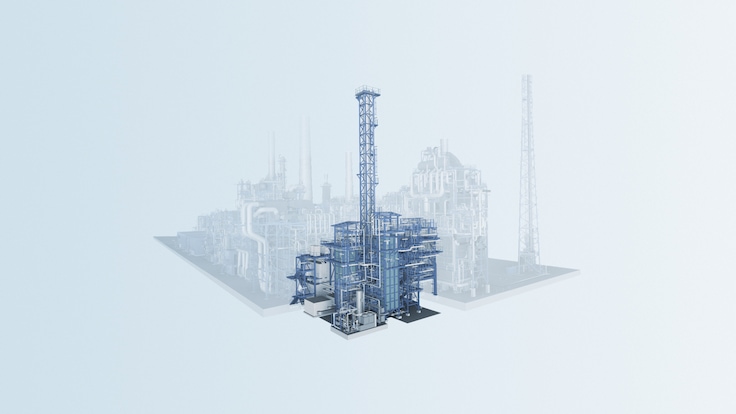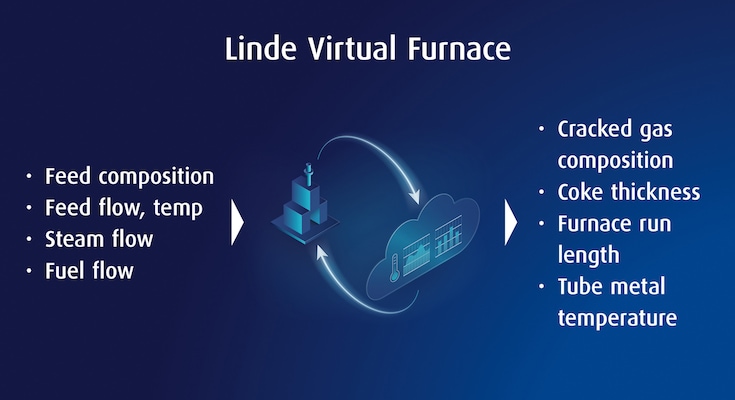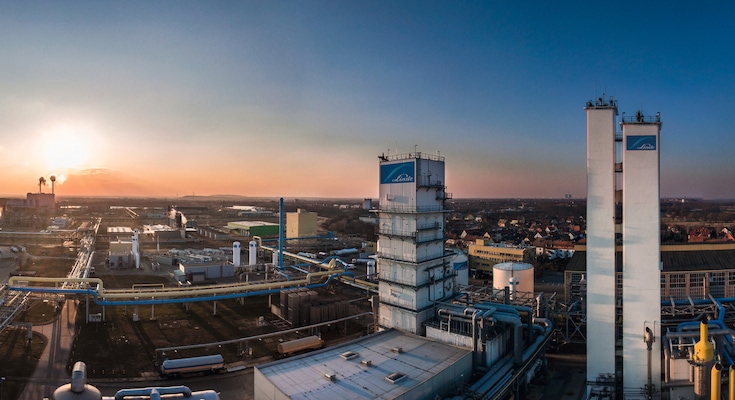
Supporting the transition to cleaner sources of energy with natural gas and LNG technologies while also contributing to the sustainability performance of petrochemical plants.


Steam crackers require huge amounts of energy in the form of fired heat to break hydrocarbons down into olefins and aromatics. As such, they account for the lion’s share of the petrochemical industry’s direct CO2 emissions, releasing a hundred million tons upward of CO2 every year. Linde, BASF and SABIC teamed up to mitigate the climate impact of steam cracking furnaces. They developed an electrification concept that heats furnaces with electric power – ideally from renewable sources.

In conventional furnaces, the cracking reaction takes place at temperatures of about 850 degrees Celsius. Fossil fuels are typically used to achieve these temperatures, and they obviously result in high greenhouse gas emissions. The eFurnace technology, which will be commercialized by Linde, replaces fossil fuels with electricity, preferably from renewable sources.
The demo plant has been integrated into the infrastructure of an existing BASF steam cracker in Ludwigshafen. The goal is to demonstrate proof of concept for continuous olefin production using electrical energy as the heat source and to provide a reference for an industrial-scale plant.
The cracking process in this electrically heated cracking furnace is essentially the same as that of a conventional plant, thus offering the same flexibility to accommodate a wide variety of feedstocks, including renewable and recycled feeds. This means that this breakthrough technology can be easily retrofitted to existing plants.
This new steam cracker technology has the potential to reduce the direct carbon emissions released by steam crackers by 95 percent or more. The remaining carbon emissions include emissions by decoking or unavoidable small flaring activities during start-up and shut-down for regular turnarounds.
The electrical power is fully utilized in the cracking coils, without noticeable heat losses. By contrast, a conventionally fired furnace can typically use only 40 to 45 percent of the fired duty in the cracking coils. The remaining heat must be recovered from the flue gas for other purposes.
Uniform heat patterns may enhance cracking performance and lower coke build-up in the reactor. This extends on-stream time between decoking operations, further contributing to carbon abatement.
Since the plant is not heated by fuel gas, methane and hydrogen formed within the process can be utilized for other value-adding applications – for instance to replace natural gas as a chemical feedstock.
The project demonstrates the power of global cooperation between leading players in their respective fields. BASF and SABIC have extensive know-how and intellectual property in the development of chemical and petrochemical processes. They also have proven experience in the operation of steam crackers. As the engineering, procurement and construction (EPC) partner, Linde is contributing know-how and intellectual property in the development and delivery of steam cracker furnace technologies. In short, a powerful alliance that is helping to propel industry towards net zero.

Supporting the transition to cleaner sources of energy with natural gas and LNG technologies while also contributing to the sustainability performance of petrochemical plants.

Solutions to improve furnace operations.

How to slash cracking furnace emissions by 95%!

The separation train of an ethylene plant is a very complex process sequence.

Positioned at the heart of ethylene plants, Linde’s steam cracking furnaces play a crucial role in the manufacture of many base products while also defining the yield, efficiency and profitability of olefin plants.

Long after your plant has gone on stream, the LINDE PLANTSERV team is there to help manage and optimize operations.